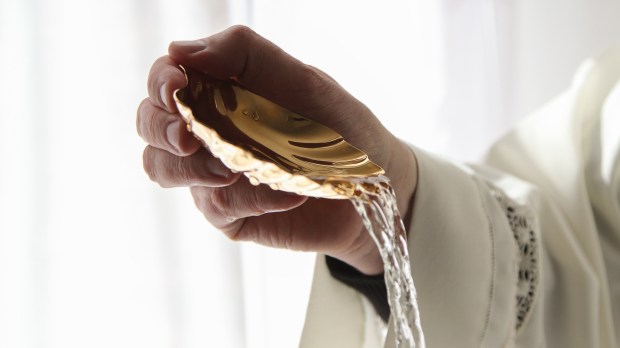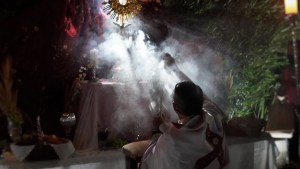Lenten Campaign 2025
This content is free of charge, as are all our articles.
Support us with a donation that is tax-deductible and enable us to continue to reach millions of readers.
The Catholic Church firmly believes in the necessity of external signs and symbols in the celebration of the liturgy and the seven sacraments.
God created the natural world around us, saying that it was “good” and giving it meaning and purpose in our spiritual lives.
Signs of the human world
The Catechism of the Catholic Churchexplains how various things from the human world carry symbolism.
Signs of the human world. In human life, signs and symbols occupy an important place. As a being at once body and spirit, man expresses and perceives spiritual realities through physical signs and symbols. As a social being, man needs signs and symbols to communicate with others, through language, gestures, and actions. The same holds true for his relationship with God.
CCC 1146
The Catechism even goes so far as to say that God “speaks” to us through his creation.
God speaks to man through the visible creation. The material cosmos is so presented to man’s intelligence that he can read there traces of its Creator. Light and darkness, wind and fire, water and earth, the tree and its fruit speak of God and symbolize both his greatness and his nearness.
CCC 1147
Furthermore, many of the activities of humans in the world can be used in the sacraments as signs of heavenly realities.
Inasmuch as they are creatures, these perceptible realities can become means of expressing the action of God who sanctifies men, and the action of men who offer worship to God. The same is true of signs and symbols taken from the social life of man: washing and anointing, breaking bread and sharing the cup can express the sanctifying presence of God and man’s gratitude toward his Creator.
CCC 1148
God created us and knows us better than we know ourselves. He knew that as a creature with both body and soul, we needed signs to point us to our origin and final destination.
The sacraments were given to us by God so that our entire being could be lifted up and led on the path to eternal life.



